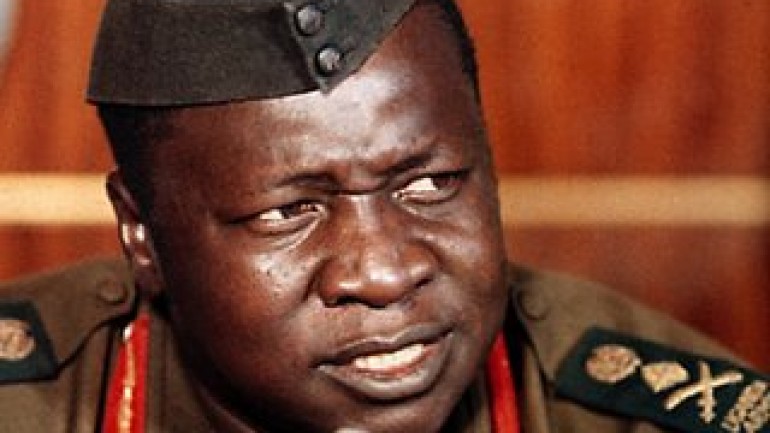Idi Amin Dada is a name that is familiar to many over the age of 35, but is almost unknown to those younger than that. The story of Idi Amin is an example the potential of humanity to carry out the most grave atrocities and offers a lesson for us all. This self proclaimed leader of Uganda came to power via a coup, but was eventually challenged by armed exile group. How Uncle Idi chose to deal with this threat makes him one of the most notorious genocidal dictators of the previous century.
Amin retaliated against the attempted invasion by Ugandan exiles in 1972 by purging the army of Obote supporters, predominantly those from the Acholi and Lango ethnic groups. In July 1971, Lango and Acholi soldiers were massacred in the Jinja and Mbarara Barracks, and by early 1972, some 5,000 Acholi and Lango soldiers, and at least twice as many civilians, had disappeared. The victims soon came to include members of other ethnic groups, religious leaders, journalists, senior bureaucrats, judges, lawyers, students and intellectuals, criminal suspects, and foreign nationals. In some cases entire villages were wiped out. In this atmosphere of violence, many other people were killed for criminal motives or simply at will. Bodies floated on the River Nile in quantities sufficient to clog the Owen Falls Hydro-Electric Dam in Jinja on at least one occasion.
The killings, motivated by ethnic, political and financial factors, continued throughout Amin’s eight-year reign.The exact number of people killed is unknown. The International Commission of Jurists estimated the death toll at no less than 80,000 and more likely around 300,000. An estimate compiled by exile organizations with the help of Amnesty International puts the number killed at 500,000. In August 1972, Idi Amin declared what he called an “economic war”, a set of policies that included the expropriation of properties owned by Asians and Europeans. Uganda’s 80,000 Asians were mostly from the Indian subcontinent and born in the country, whose ancestors had come to Uganda when the country was still a British colony.
Many owned businesses, including large-scale enterprises, that formed the backbone of the Ugandan economy. On 4 August 1972, Amin issued a decree ordering the expulsion of the 60,000 Asians who were not Ugandan citizens (most of them held British passports). This was later amended to include all 80,000 Asians, with the exception of professionals, such as doctors, lawyers and teachers. A plurality of the Asians with British passports, around 30,000, emigrated to Britain. Others went to Australia, Canada, India, Pakistan, Sweden, and the U.S. Amin expropriated businesses and properties belonging to the Asians and handed them over to his supporters. The businesses were mismanaged, and industries collapsed from lack of maintenance. This proved disastrous for the already declining economy.





Wild Card City is excellent for Australians looking to play Pokies Online. It has a wide range of slot games, from classic pokies to modern video slots. Bonuses are fair, and banking options are fast and secure. Australians who want a reliable and enjoyable online casino experience will find Wild Card City to be a trustworthy platform.
AGE RESTRICTED
2001 documentary
the truth is this documentary has been sensationalized to fit the current governments propaganda..keeping idi Amin as a basis of comparison is the reason Uganda hasn’t really developed since his time.. i’m Ugandan.. i know of what i speak…
A brilliant insight into Idi Amin as the person behind the regime. It helps if you have some prior knowledge of Uganda at this time so you are able to spot the propaganda exercises and be able to interpret Amin correctly (not just believing what he says). Fantastic insight for anyone interested in Amin, Uganda or African history.
How on earth did this get an 8.7? Its RUBBISH.
idi amin is childlike he thinks he acts and god help you if your in his way
How do guys like this become leaders are we all zombies
ID=ZERO…………
This guy is barely functional as a thinking being… How can he run a country?